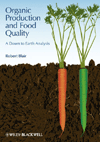How to reduce food waste with smarter packaging designs


Maria Ferrante
In its report From Farm to Kitchen: The Environmental Impacts of U.S. Food Waste, the EPA estimates about 35% of the food produced in the United States is wasted. This amounts to 492–1,023 lb. per person per year and a market value of $408 billion. Reducing food waste could help feed more than 150 million people annually. This could take care of all food-insecure Americans (estimated at 35 million) as well as millions of hungry people elsewhere in the world.
Decreasing food waste also would cut the need for new food production operations and lessen deforestation, biodiversity loss, greenhouse gas emissions, water pollution, and water scarcity. A study cited in the EPA report predicts cutting global food loss and waste by 50% would reduce greenhouse gas emissions by 24% between 2020 and 2100. Food waste has in fact been cited as part of consumers’ growing concern about the environmental impacts of the supply chain, according to a recent study by PMMI, The Association for Packaging and Processing Technologies.
Packaging solutions can make the difference
Food waste occurs at every level of the supply chain from field to kitchen, and the impact increases as food moves from the field to the consumption stage. Homes account for 37% of food waste, more than any other part of the supply chain, according to Roadmap to 2030, a report published by ReFED, a national nonprofit promoting data-driven solutions to end food loss and waste across the food system. Other contributors to food waste include farms (21%), manufacturing (14%), and consumer-facing businesses (28%) such as retailers, restaurants and foodservice operations.
In the bakery and snack food industry, many products, unless frozen or otherwise protected, have a shelf life measured in days. Package design can discourage product staling by providing a barrier to oxygen and moisture and maintaining a modified atmosphere in the headspace to slow oxidation, water loss or gain, and microbial growth. This extended shelf life helps reduce food waste.
To further support food waste reduction efforts, ReFED’s report suggests implementing packaging design improvements that:
- Are transferable between supply chains, e.g., foodservice to retail.
- Reduce household waste via sub-packaging, re-sealability, shelf-life-extending active and intelligent packaging, smaller sizes, and usability information.
- Standardize date labeling and extend dates for quality-based date labels where possible.
In addition, attention should be devoted to matching production to demand and avoiding over-production. It’s also important that producers expedite time to market and increase distribution efficiency, while retailers need to focus on monitoring the remaining shelf life of their products and take steps to quickly sell or donate product approaching the end of its shelf life.
These tactics will require greater digitalization of the supply chain, according to SNAC International. Connected systems and processes give stakeholders the supply, production and management data needed to optimize operations and minimize waste at each stage of the supply chain. Adopting digitalization, modified atmosphere packaging, active packaging, and other packaging innovations can reduce food waste, feed the hungry, and save billions of dollars.
Looking for a reprint of this article?
From high-res PDFs to custom plaques, order your copy today!







